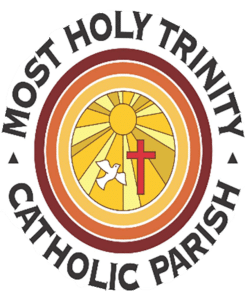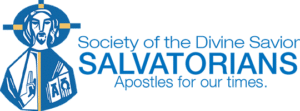Our Council
The Most Holy Trinity Parish, Tucson, Arizona
Our council was founded in Summer of 2023
We named our council after Blessed Francis Jordan.
Founder of the Society of the Divine Savior.
Council 18215, how we began.
Deacon John Terry, a member of the Knights of Columbus at Saint Elizabeth Ann Seaton’s and Father Tom Tureman SDS, an honorary life member of the Knights, had been advocating for the establishing of a Knights of Columbus council at Most Holy Trinity Parish for several years, but it never seemed to generate enough interest.
Finally, their persistence paid off when several Knights of Columbus State and local officials headed by District Deputy Schnieder, held recruitment drives at Most Holy Trinity during the months of April and May 2023, and signed up the initial group of new members. This was quickly followed by the Exemplification of Charity, Unity and Fraternity, and Blessed Francis Jordan Council 18215 was born. Blessed Francis Jordan was adopted as our Council figure head, the founder of the Society of the Divine Savior, Most Holy Trinity Parish being a Salvatorian administered parish. Our first council business meeting was held on June 13th, 2023, at 7:00pm in Guadalupe Hall, twenty-six members attended that inaugural meeting.
District Deputy Scheider explained the functions of various council positions and called for volunteers for those positions, our initial officers. This council has proceeded to develop and flourish, our first year as a council has seen us help the “Casa Maria” with the water bottle drive and a donation from the state raffle proceeds, young teens and children across the state with the “Hoodie Project”, Sister Jose’s Women’s center with a donation from the state raffle proceeds, plus our many Breakfasts and Fish Fry’s.
All this service and our recruiting has helped us attain Double Star award and the state “Faith in Action Community Award.”
Vivat Jesus!

Blessed Francis Mary of the Cross Jordan.
Father Jordan was born on June 16, 1848, second son to Lawrence and Notburga nee Peter. On the following day he was baptized at the local parish church with the name John Baptist. Being brought up in a poor family, he was not able to realize his dream of becoming a priest, although as a teenager he had already become aware of his vocation at the time of his First Communion. He finally decided to follow his vocation and to begin studies in theology.
In 1869 he started private lessons with his priest friends in Waldshut; after that, he studied at the gymnasium in Constance. In 1874 John Baptist began his studies of theology and philology at the Ludwig Albert University in Freiburg in Breisgau. After successfully finishing it, he started his preparation for the priesthood at St. Peter Seminary, close to that town.
On July 21, 1878, Jordan was ordained to the priesthood and later, on the order of his bishop, he left for Rome to begin studies of oriental languages: Syrian, Aramaic, Coptic, Arabic, as well as Hebrew and Greek.
From the time of his theological studies, he had a growing conviction that he was being called by God to found a new apostolic work in the Church, in which members would defend the faith and contribute to enlivening it, by proclaiming to all people that Jesus Christ is the only Savior. Father Jordan’s work received the name Apostolic Teaching Society, and on December 8, 1881, its first grade was officially inaugurated in Rome, at Piazza Farnese 96.
A year later the name was changed to the Catholic Teaching Society, and in November 1882, the growing community with Father Jordan moved to a building in Borgo Vecchio 165, which became their Motherhouse.
In 1893 the men’s community received its current name: Society of the Divine Savior. Father Jordan devoted himself totally to the work of developing his institute as its founder, spiritual guide, and superior general. Thanks to his great determination he founded a second female religious congregation (Sisters of the Divine Savior) in 1888 with Therese von Wuellenweber (Blessed Mary of the Apostles).
Another important development was taking over a mission in Assam, as well as founding new houses of the Society in various countries of Europe and other parts of the world. Through all these experiences Father Jordan matured as a human being, as a religious, and as a priest and founder, developing his personality and growing spiritually. The foundation of this spiritual growth was his deep love of God and neighbor, his perseverance in prayer, his trust in Divine Providence, as well as his humility, love for the Eucharist, courageous acceptance of the cross, and fidelity to the Church. Over the course of time Father Jordan began to be considered as a man who led a holy life, both by the members of his community and by people from outside. At the same time, he witnessed the important development of his work both geographically and numerically.
In 1915, because of World War I, the Society leadership, together with Father Jordan, was forced to move from Rome to neutral Switzerland. Father Jordan spent the last three years of his life in Fribourg (Switzerland). He died in a small hospice in Tafers near Fribourg on September 8, 1918, and was buried in the local parish church.
In 1956 his mortal remains were transferred to the Society Motherhouse in Rome. In 1942 his process for beatification was officially started, and in 2011 the Decree on the Heroicity.



